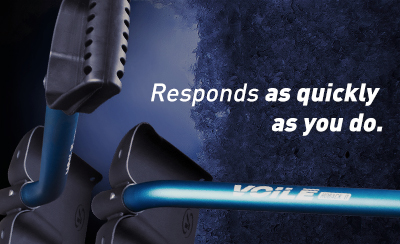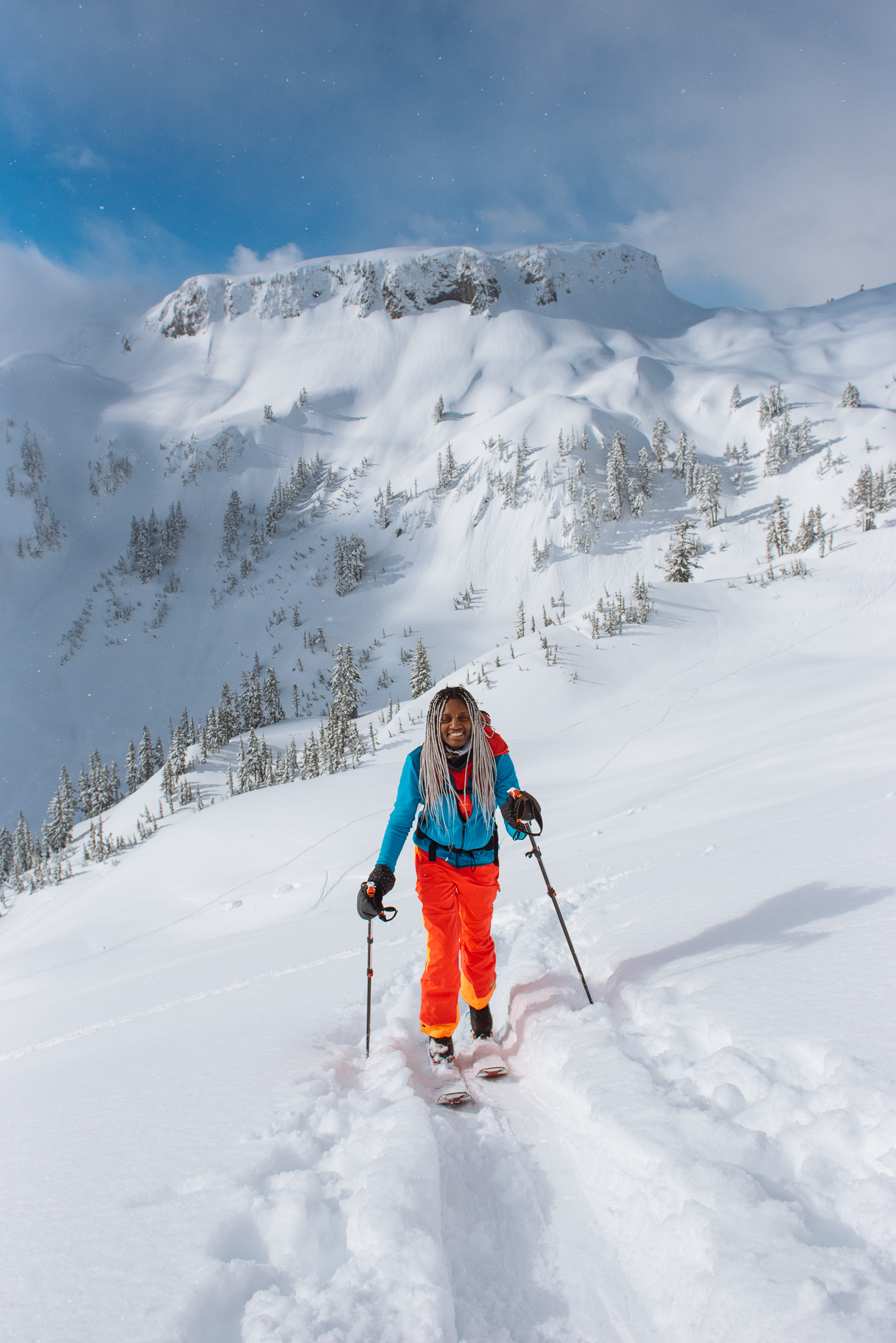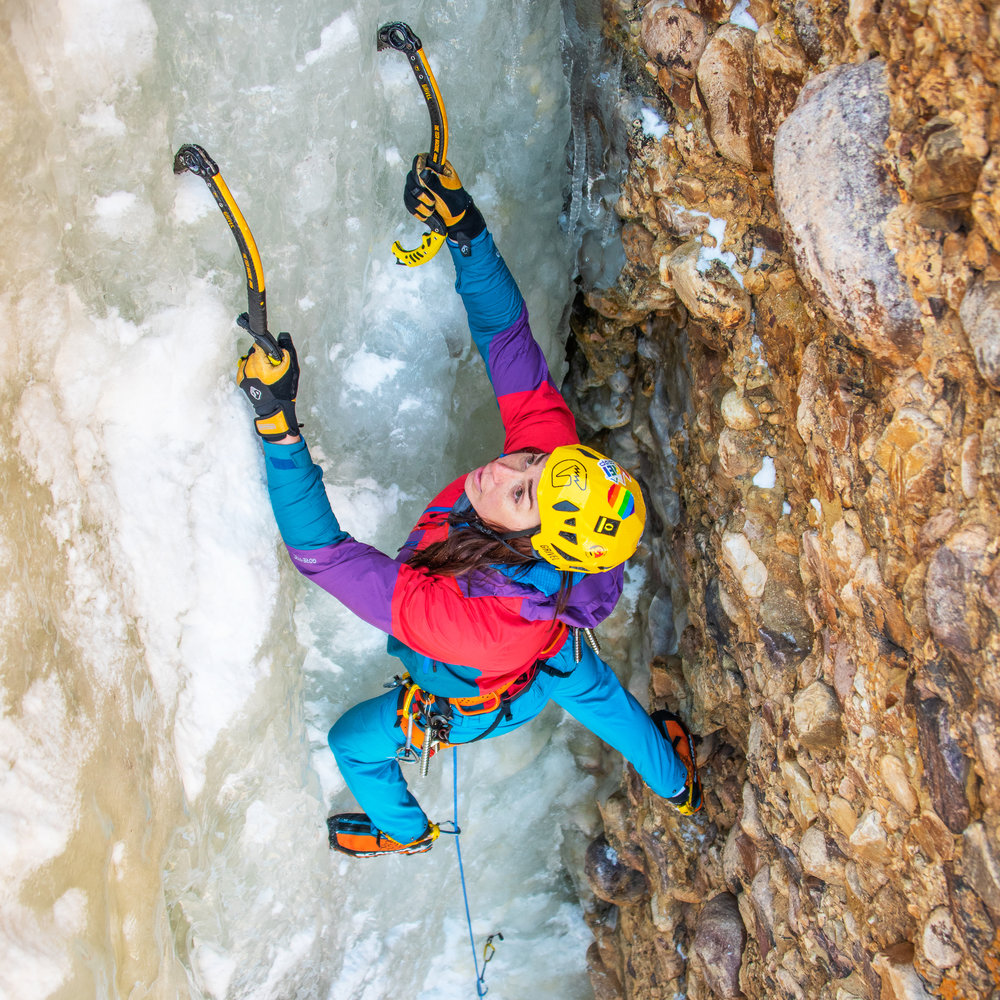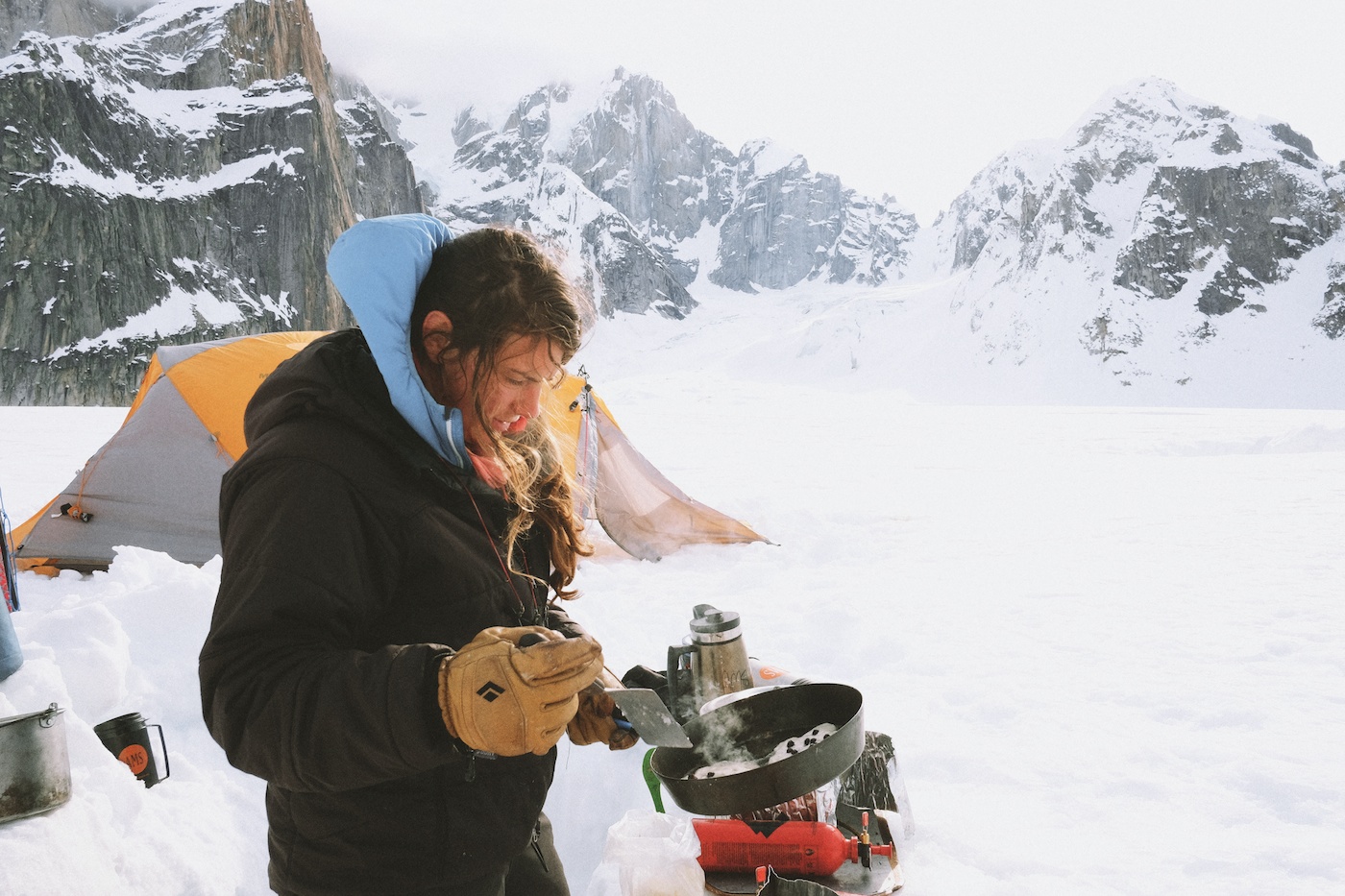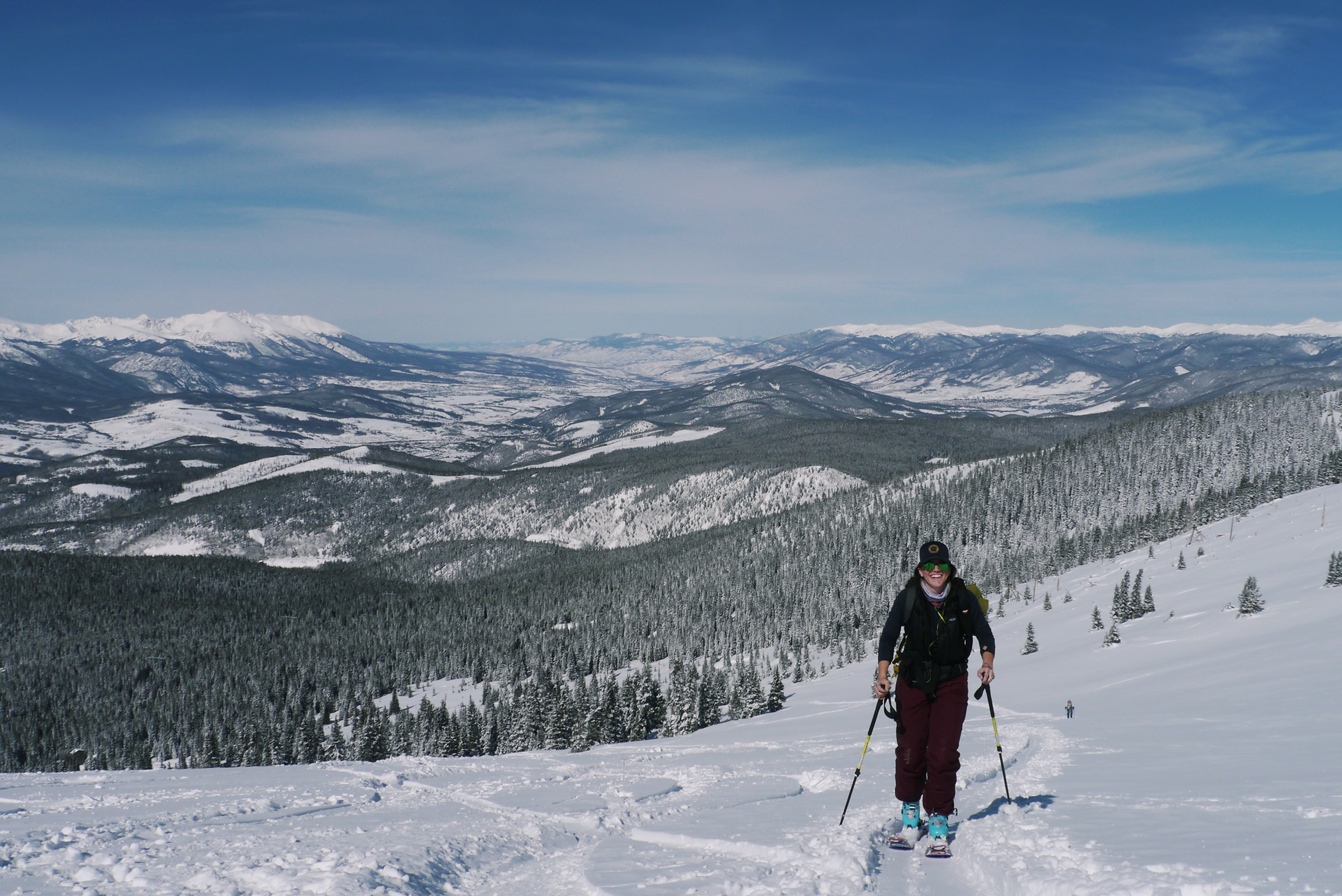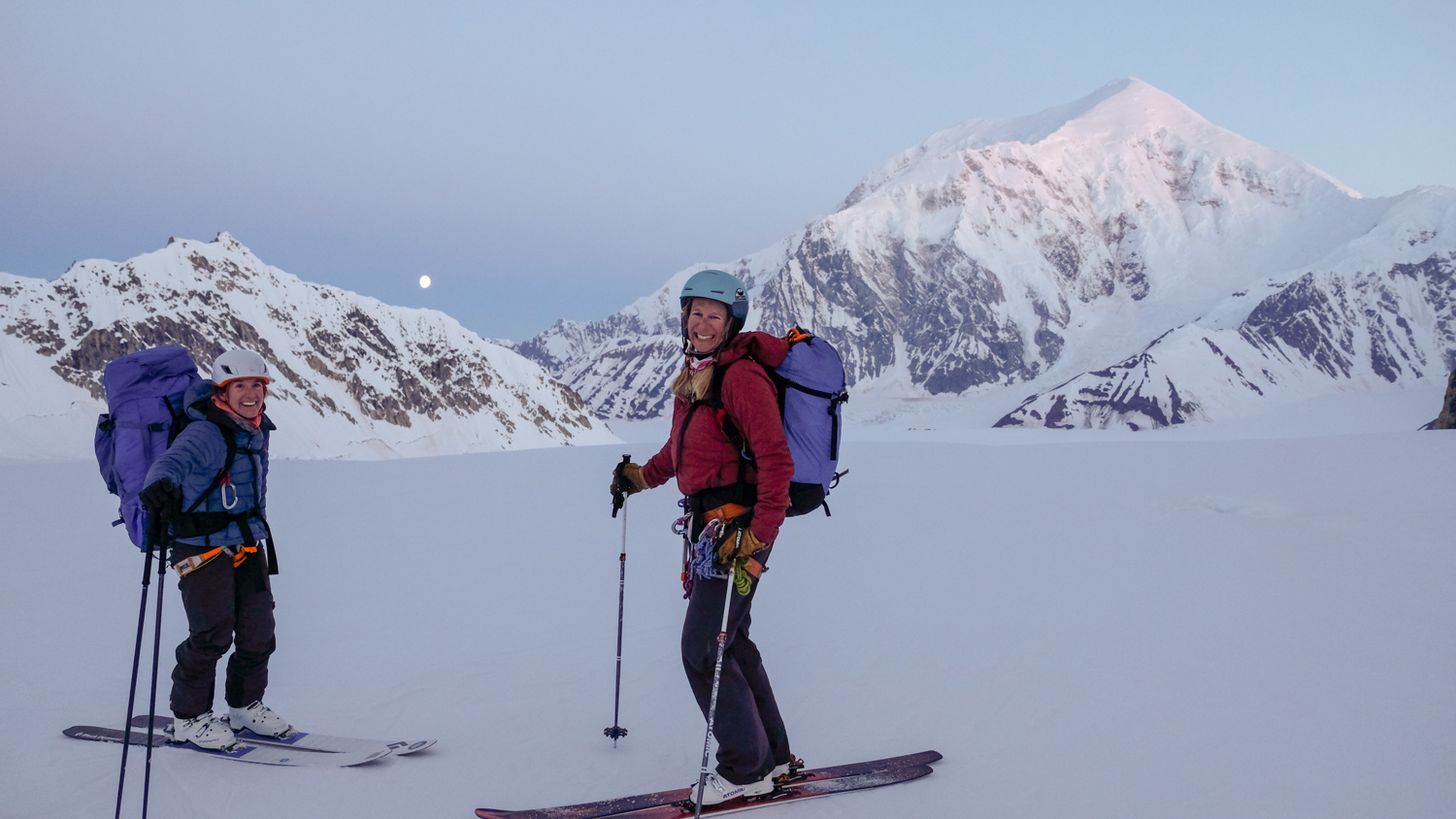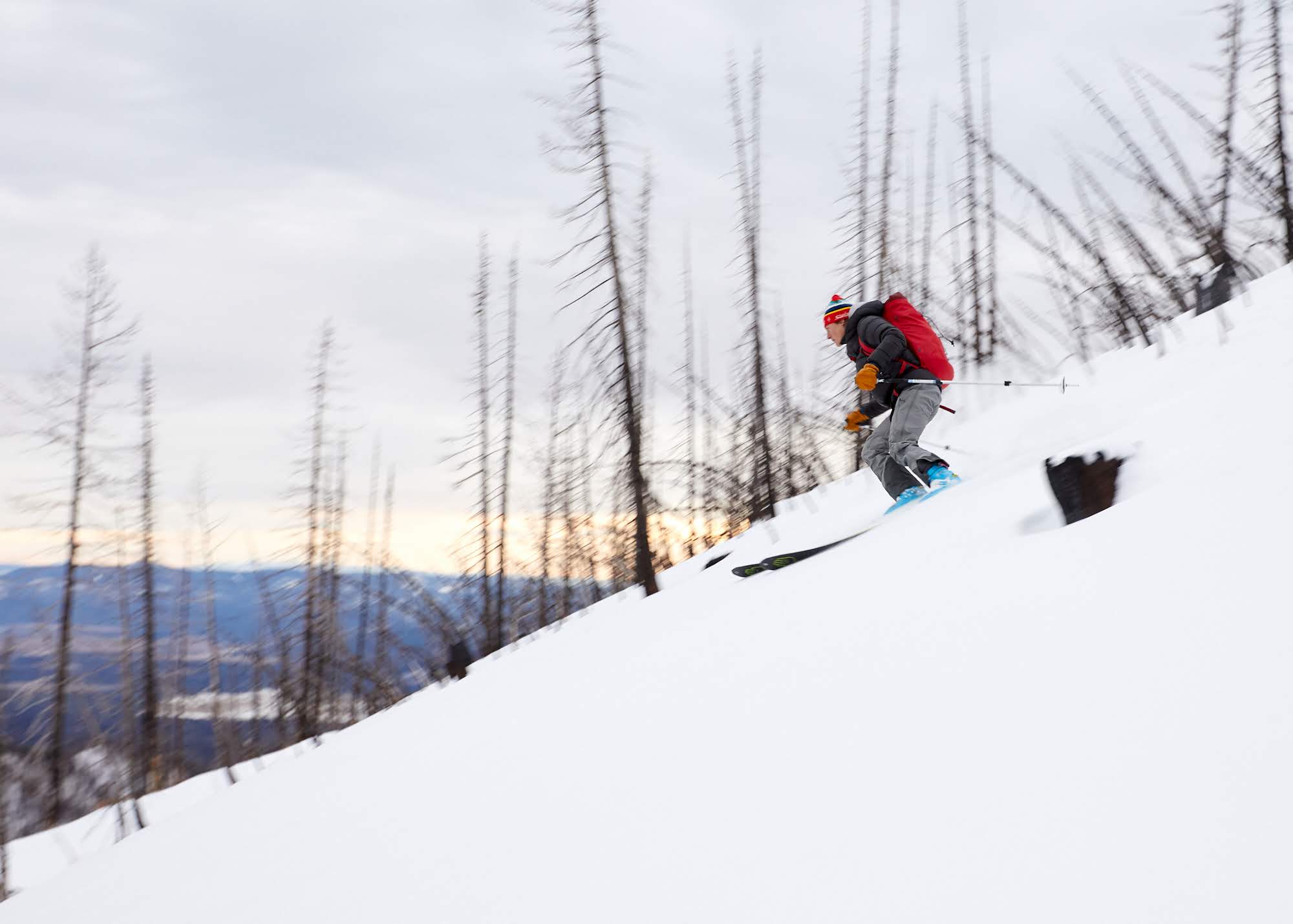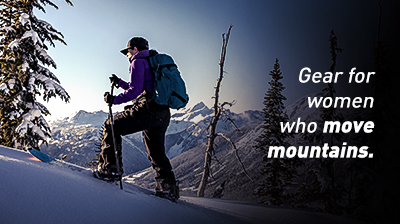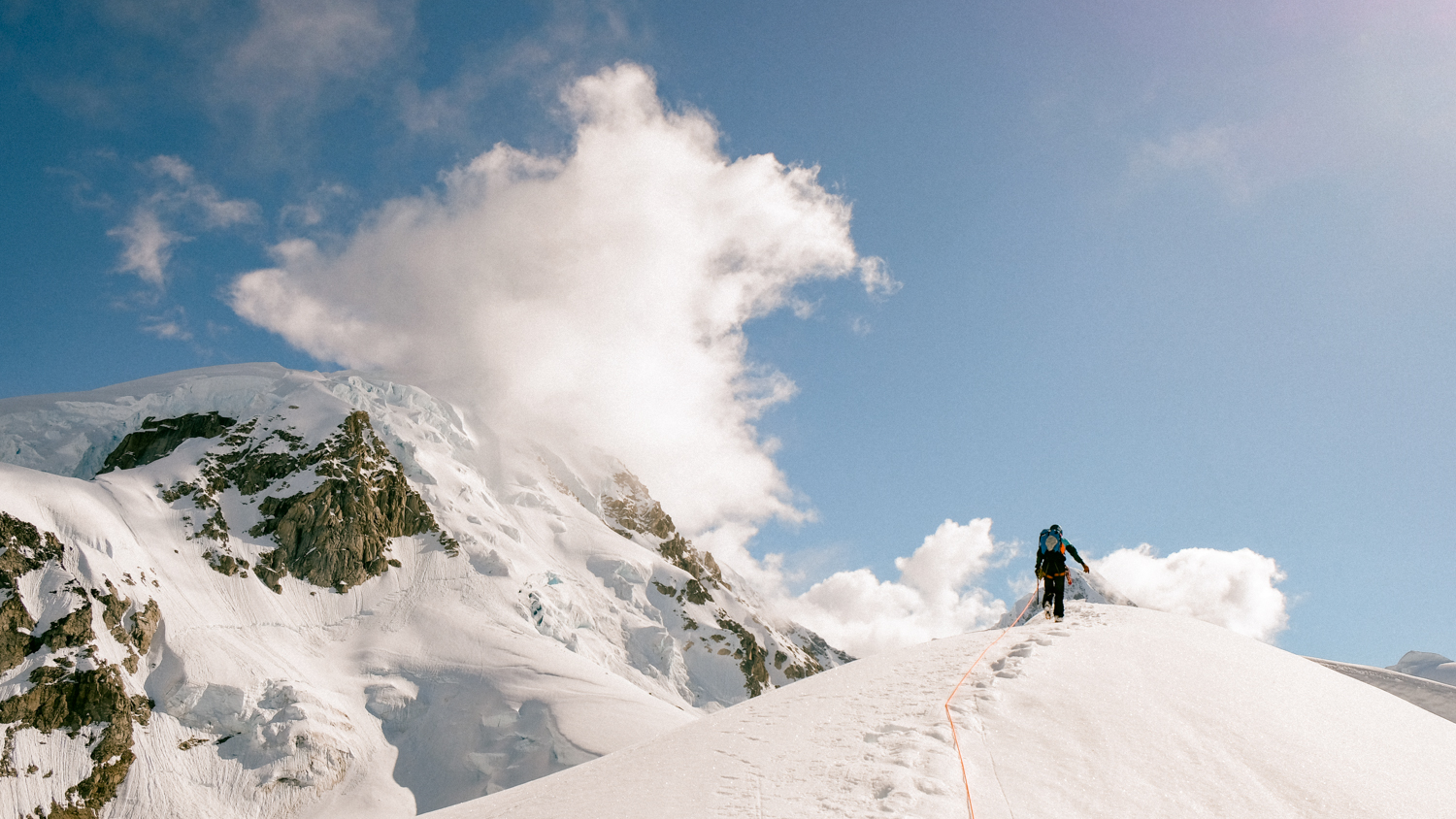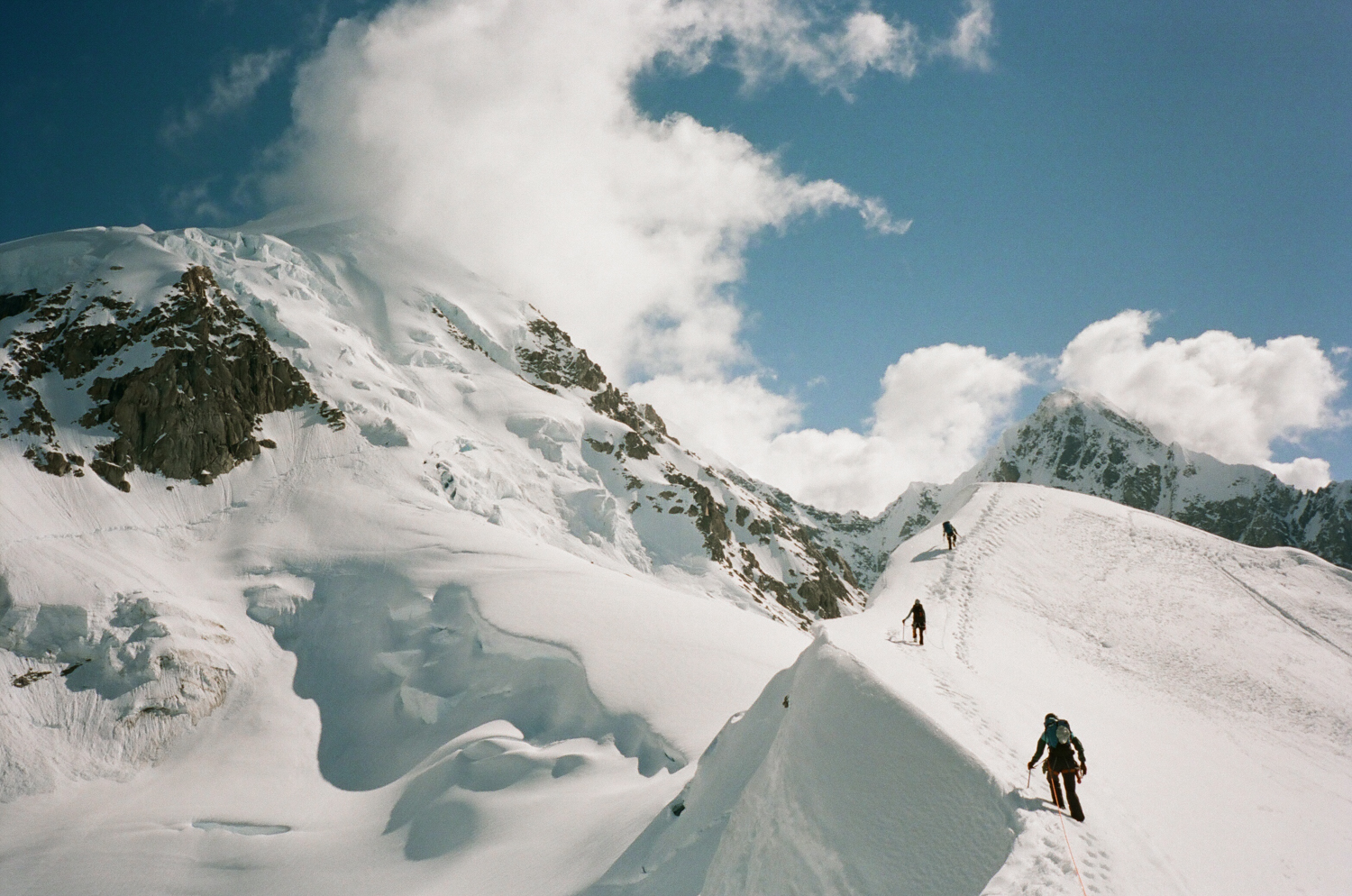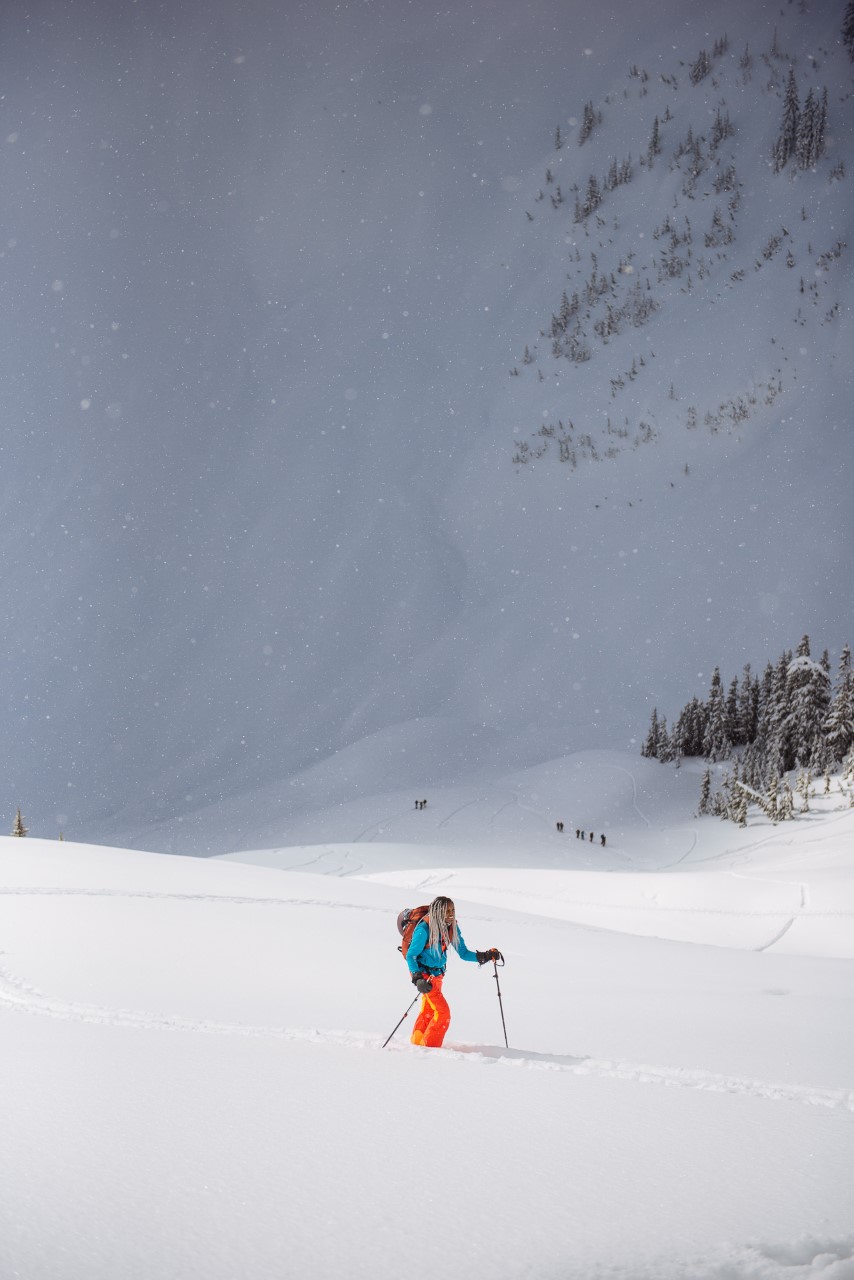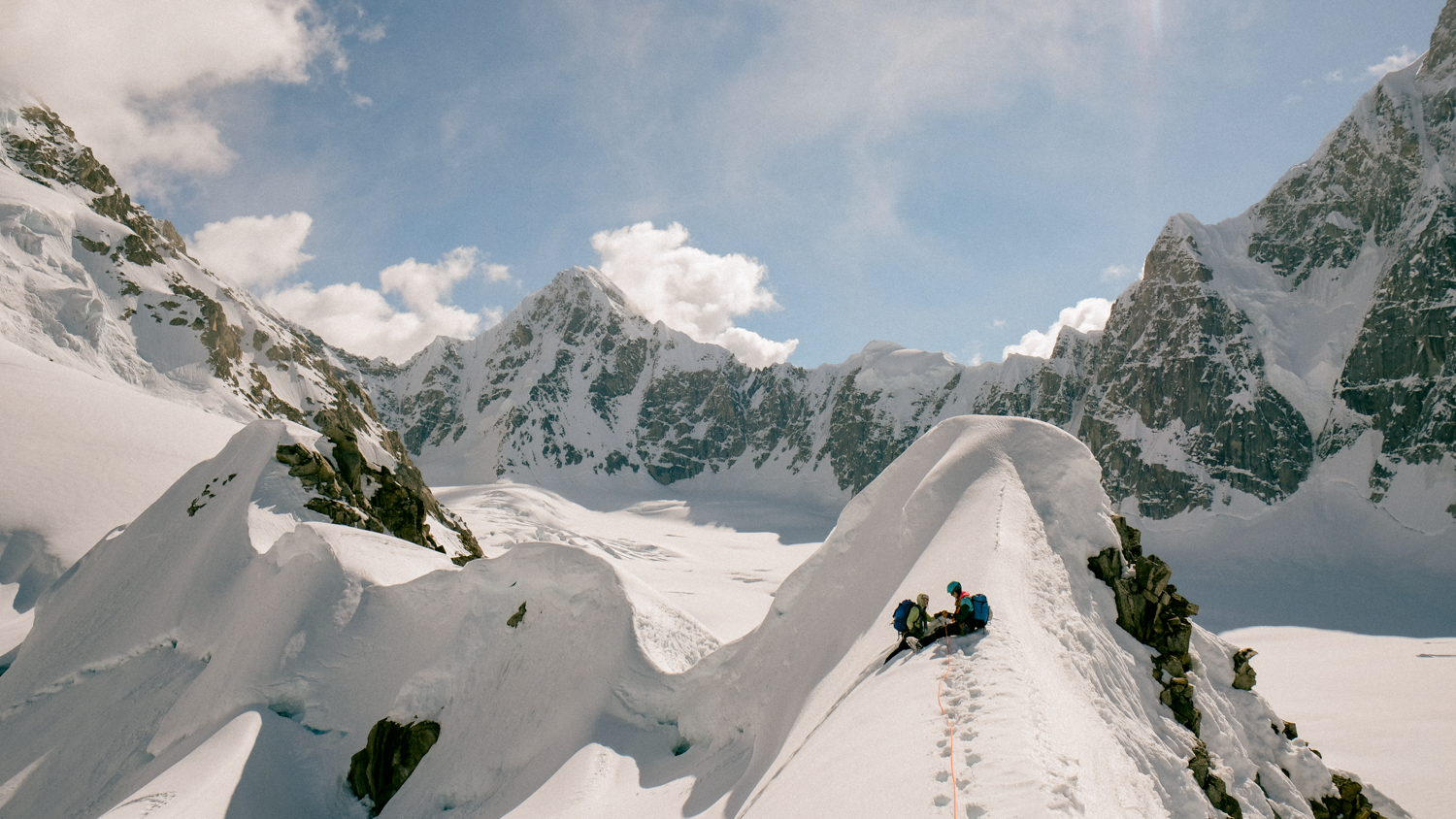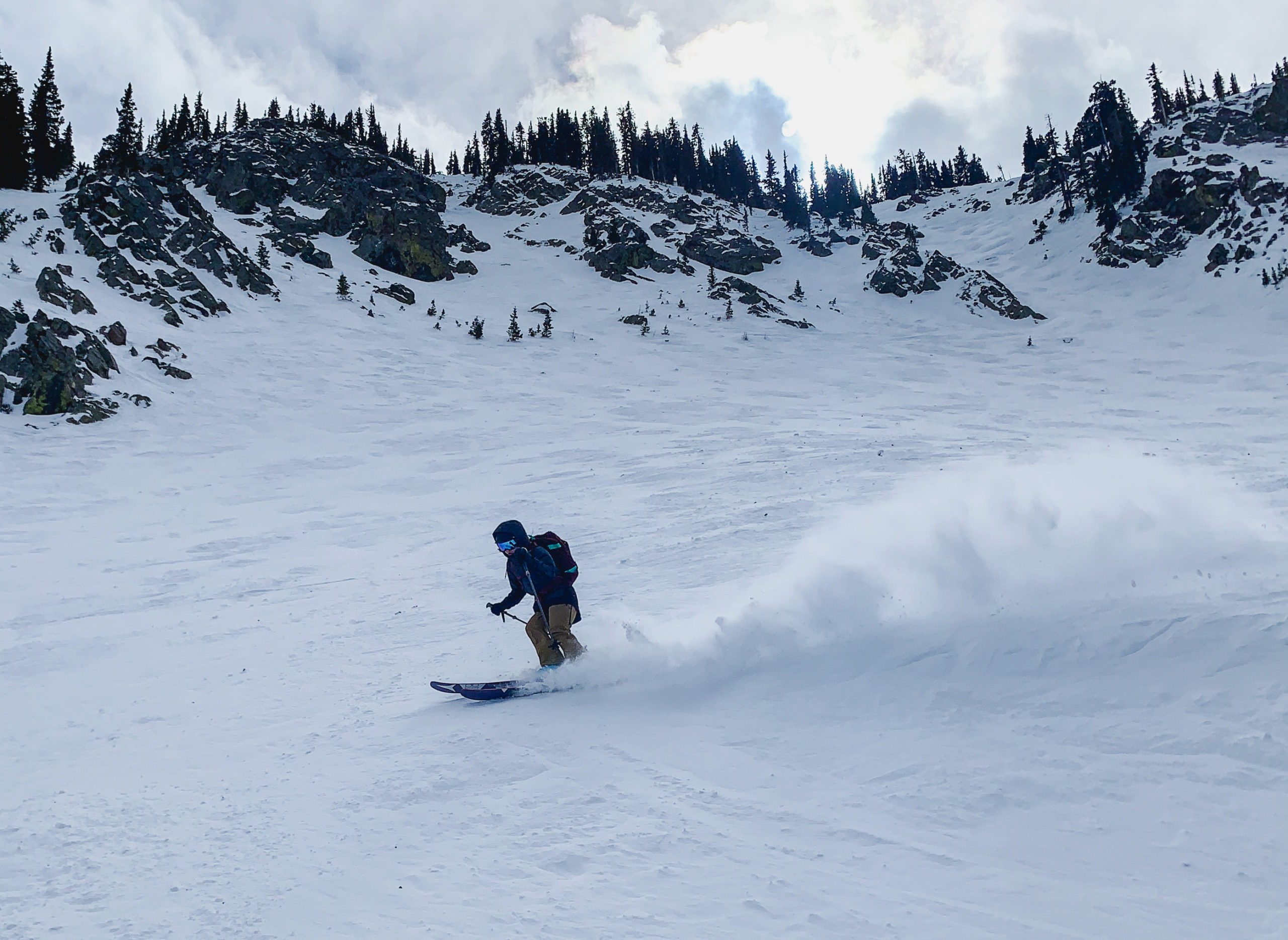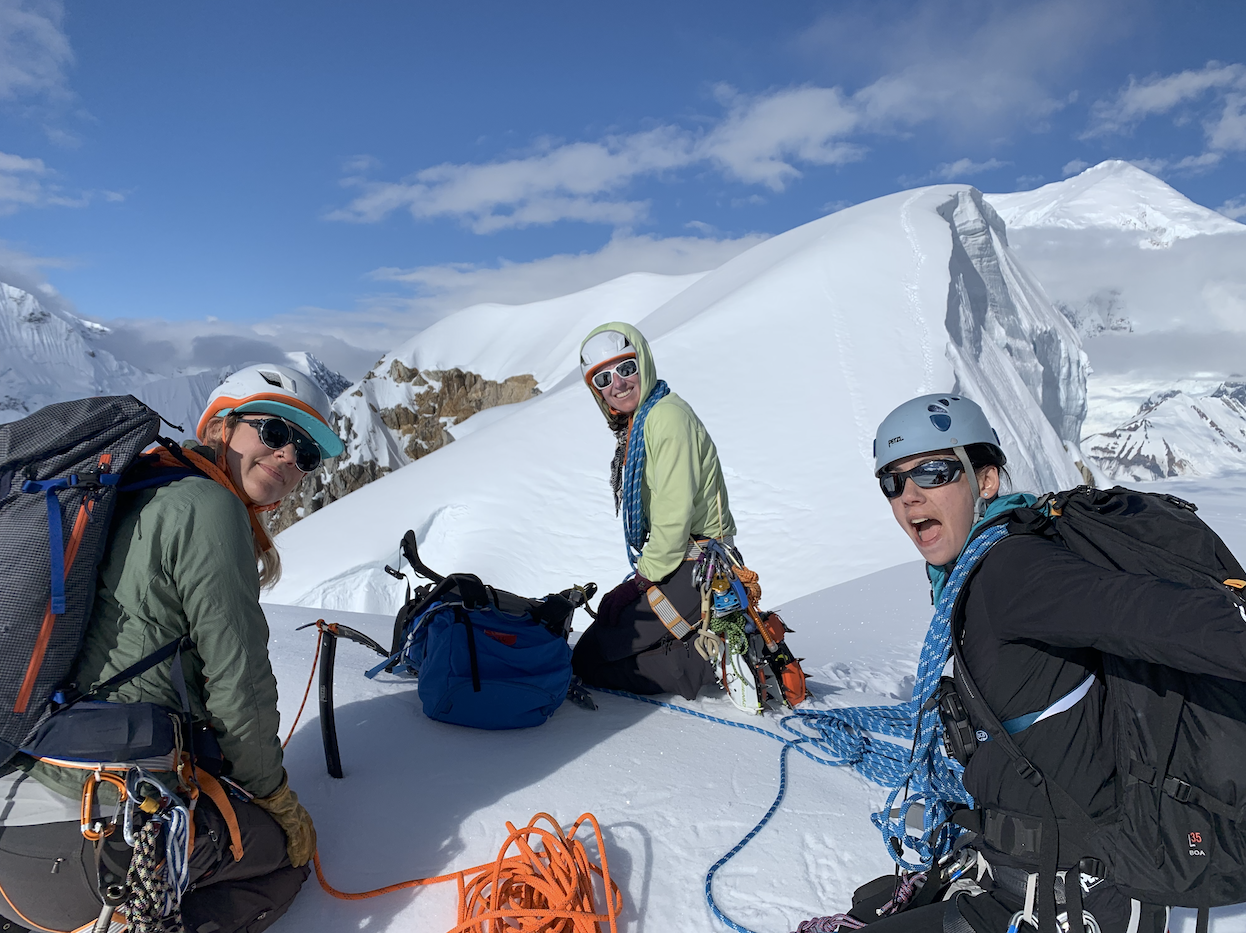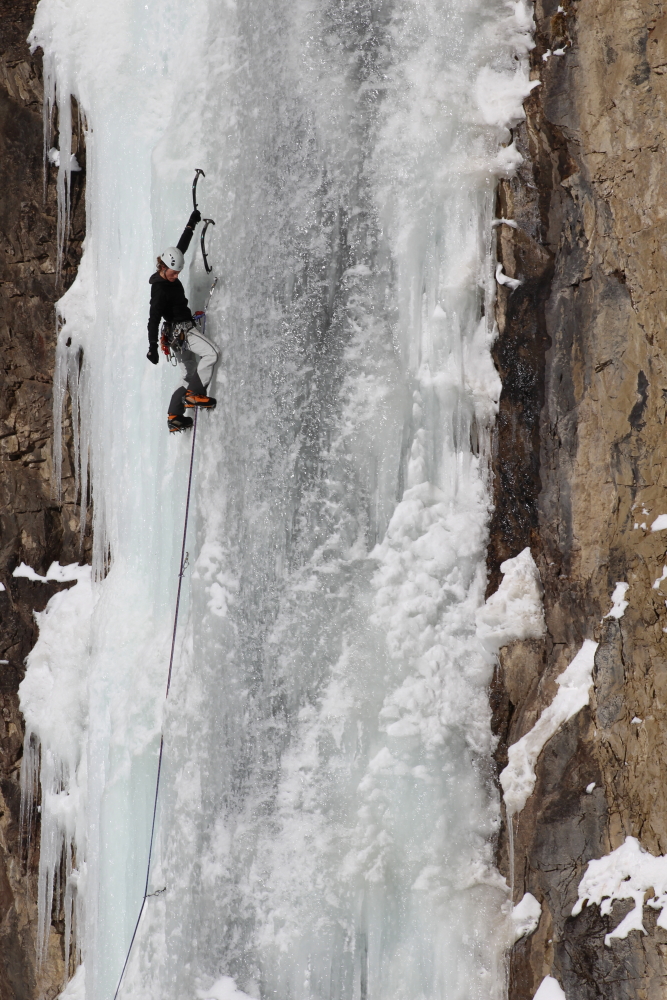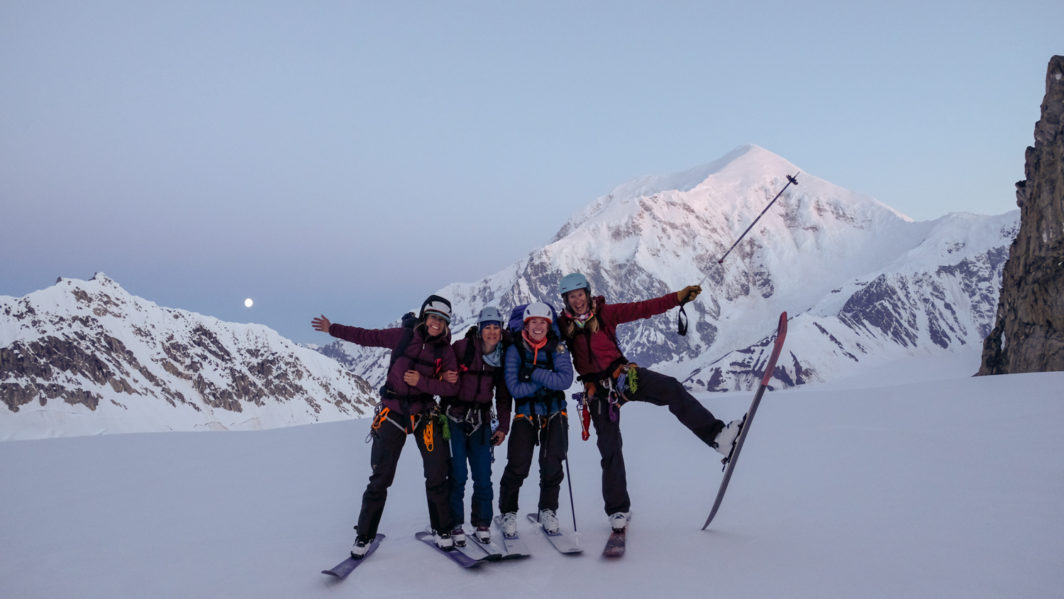
Women in the Mountains
Women in the Mountains feature photo: V-team ambassador Emily Sullivan (left) and Melis Coady (middle right) on an all-female basecamp patrol on Denali. Photo by Emily Sullivan.
Share this Post
As International Women’s Day approaches, I’ve been reflecting on the distinctive experience of being a woman who lives for the mountains. I often think about the challenges women face in the outdoor community, the unique strengths we bring to our objectives, and what it means to be a woman in a big-mountain environment. I dove into these topics with six incredible mountain women: Darcy Chenoweth, Micheli Oliver, Chelsea Bomba, Nikki Smith, Juju Milay, and Melis Coady. Some have been my mentors and partners in the mountains and others have inspired me from afar through social media, writing, and photography. Each brings a unique outlook and experience to the table, yet a set of common threads were woven throughout the answers they shared.
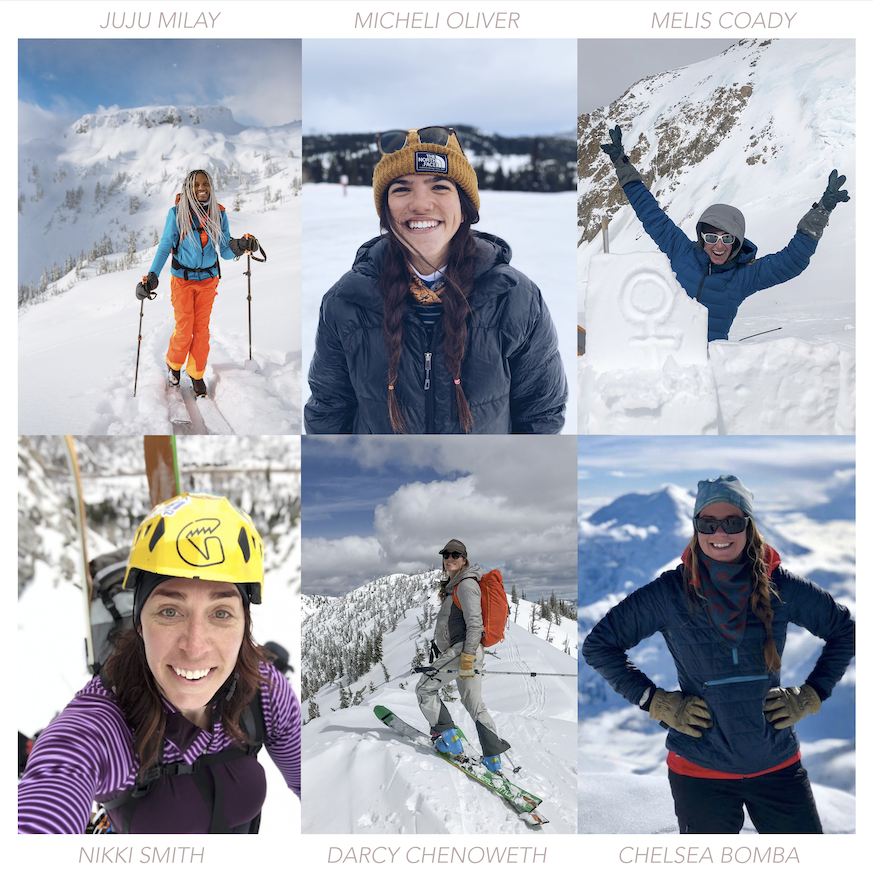
To be clear, none of us want our accomplishments to be qualified by our identities (“she rips for a girl!”, “she’s as strong as her brothers”, “she’s a trans climber”), yet we can’t ignore the differences among humans within our society. As we talked, Nikki reminded me that “aspects of our identity–race, gender, sexuality, age, and more–play off one another and can create obstacles that others might not face. If we don’t address this, we can’t fully understand someone’s experience.”
Each woman I interviewed tells one story, a small piece of thread that contributes to “the tapestry of Woman,” as Darcy called it. As I read their words over and over, I found a beautiful interweaving of threads, which I hope will illustrate the beauty and the challenge that it is to be a woman in the mountains.
The beauty of women in the mountains:
So what does it mean to be a woman in the mountains? To begin: freedom. In a love affair between a woman and a mountain, the mountain expects nothing of her but to be human. Mountains are, by nature, challenging and harsh. They command respect, but they also invite us in–among them, we can be ourselves and shed societal expectations.
“I don’t have to worry about how I move within the female body or how society gauges my female body–out in the mountains there is no judgement. My femininity, and how I express it, is not relevant to nature: I am just a being. I find it very liberating.. I’m not thinking about my womanness, I’m just present in the moment and the spectacular view. I can be in solitude—what makes me a woman is left behind.” Juju Milay Founder, Colour the Trails
Juju Milay – tap photo for bio.
“Being a woman in the mountains means freedom. To exist as myself in the mountains meant I had to shed the version of me the world wanted me to be. I had to shed all the expectations, privilege, and safety that came with pretending to be someone I wasn’t. I had to shed all the self-hate and fear I held onto. Now I’m free to experience everything again, but without hiding who I really am.” Nikki Smith, Climber, Photographer
Nikki Smith – tap photo for bio.
“When I’m in the mountains, I’m generally not reflecting on my gender, except for when I pull out my pee funnel. The mountains don’t care which sex I identify with, so why should I in their presence? I recognize how privileged I am to hold this perspective—I was born into circumstances that ultimately made access to the mountains relatively easy, and had endless support from my family, friends, and colleagues. Not everyone can say the same.” Chelsea Bomba, Mountaineering Guide
Chelsea Bomba – tap photo for bio.
“I actively fight against the socially constructed ideas of what it is to be a woman, and instead focus on what it means to be a human. But I acknowledge the beautiful differences of feminine and masculine attributes. To be a womxn in the mountains for me is a delicate combination of spirituality, raw emotions and grit. It’s all I’ve known and all I want to know for the rest of my life: the mountains are my relatives.” Micheli Oliver, Outdoor Photographer, Skier
Micheli Oliver – tap photo for bio.
“In the mountains, I can be the same as everyone else—I can wear the same clothes, eat the same food, climb the same mountains; get sore, smell bad, and escape the bustle of the ‘real’ world.” Melis Coady, Executive Director- Alaska Avalanche School
Melis Coady – tap photo for bio.
Women also have a distinct and beautiful awareness of the land as a living host for our adventures. We are relational beings by nature, and see mountains as more than objectives.
“My identity as an Indigenous womxn shapes my experience in the backcountry. I carry with me the understanding of a reciprocal relationship with mother earth on sacred lands where generations have come before me.” Micheli Oliver, Outdoor Photographer
“I’ve interacted with the mountains as a relationship. The relationship is messy, blissful, painful and tranquil. I do love the physicality of what the human body can endure, but what I value most is the ability to sit and watch the clouds move over a ridgeline, or to see the patterns of lichen on a rock—to be attentive, to notice. To know that my body fits into the larger whole of the landscape, not existing separate from it.” Darcy Chenoweth, Cartographer, Climber, Skier
Darcy Chenoweth – tap photo for bio.
Challenges for women in the mountains:
The challenges women face in their mountain careers are many. While this section could be pages long, the common threads I found were these: in the outdoors, women are often perceived as less capable, can be judged by our size and appearance, and have to outperform or prove ourselves to men in order to be taken seriously. Yet society has taught women that to be assertive is to be unlikable, creating even more obstacles for effective communication.
“Early in my career as a mountaineering guide, I was treated poorly by men who were not open-minded about what a successful climber should look like. They questioned whether I could carry my weight, keep up, and make difficult decisions. I tried to prove myself by carrying more than my fair share, traveling faster than was smart, and pushing too long into poor weather. In retrospect, this was all unnecessary. I have now developed a way of communicating that commands respect, plays on logic and compassion, and draws on experience. I wish I had learned to carry myself more confidently at a young age. Society could have helped me a bit more with that when I was a young girl.” Melis Coady, Executive Director- Alaska Avalanche School
“I often feel like I need to work harder to prove myself to gain respect from clients initially. Not only because I’m a woman in a male-dominated profession, but appearance-wise, I’m not what people picture when they think of a female mountain guide. Extra judgment is projected on women in this male-dominated space: “She’s too small, she’s too big–will she be able to perform? She’s not confident enough, she is too confident. Look at that output, she’s trying too hard. Why doesn’t she lighten up and smile more? Woah, she giggles too much to be taken seriously” I find myself focusing at times on how I present and appear in order to meet these flawed ideals of a strong, capable, trustworthy and successful woman, which can be distracting. Ultimately, what matters is this: I am responsible for people’s safety and need to have a clear, level head in order to make good decisions in such dynamic complex terrain.” Chelsea Bomba, Mountaineering Guide
Women in the mountains. Photo by Emily Sullivan.
“As women in the mountains, we can sometimes be dismissed–people don’t believe in us right away. There’s almost an idea that women and mountains don’t belong together. If you look at the mountaineering and skiing community as a historian, it has been an exclusively white male space, with a few white females. For me, as a black woman, taking up space and being out there in the mountains, I am reclaiming my space on earth–recognizing that I have the right to be in that space as much as anyone else.” Juju Milay, Founder, Colour the Trails
Notably, unique interpersonal dangers exist for women in the outdoors—these are especially heightened for women of color, trans women, and members of the LGBTQ+ community.
“When I was 19 and hiking alone, my Dad bought me pepper spray, a taser and a knife. He gave me these weapons not to protect myself from wildlife, but to protect myself from men on the trails. This is a vulnerability carried by women daily, in all walks of life. When I go on trips with men in the backcountry, I’m putting myself in an extremely vulnerable position—I run the risk of being physically overpowered with no way to seek help. My Dad knew this, and before I went out by myself he gave me tools to make sure I would be safe.” Micheli Oliver, Outdoor Photographer
“Being a trans woman in the mountains means I have to be afraid. Not of the mountains, but of the people on and surrounding the trails, crags and runs. I have to worry whether I’ll be attacked coming out of a gas station bathroom on the drive to the trailhead. I have to research each state I visit for recreation to see if I can even use a public bathroom without being arrested. I have to worry whether I can hold my wife’s hand or kiss her at the crag without being harassed.” Nikki Smith, Climber, Photographer
Melis Coady leads an all-female team of volunteer patrollers at Denali’s Basecamp. Photo by Emily Sullivan.
The unique strengths of women in the mountains:
Despite the challenges we face, women are uniquely equipped for sound decision-making and success in the mountains. Common threads of strength were found in the compassion, intuition, and authenticity of women in the outdoors.
“While I don’t believe in stereotyping by gender, I do believe that women are socialized to have a different relationship with their egos than men. The National Avalanche Accident Database reported that 90% of fatalities are male, while 10% are female. My decisions in the backcountry stem from both an extensive amount of time spent learning snow hydrology, as well as an understanding of when I am in over my head—I resist pressure to overcompensate, as men are often socialized to do.” Micheli Oliver, Outdoor Photographer
“Our intuition. As women, we don’t go out with a conquering mindset, which gives us a different perspective while we’re in the mountains. We’re able to analyze and assess conditions really thoroughly. We are able to speak out when we sense that we aren’t in a safe space, or we feel a sense of danger. This also has to do with our everyday lived experience in the female body–there is always danger around, so we are hyper aware of where we are and if a situation is safe.” Juju Milay, Founder, Colour the Trails
Juju Milay – tap photo for bio.
“Women often have a more open, honest and inclusive communication style. They are more likely to show compassion and vulnerability. I believe these specific traits assist in navigating the hard conversations associated with complex decision making.” Chelsea Bomba, Mountaineering Guide
“In high consequence terrain, different styles of thinking become very evident. There are a million shades of gray here, but men tend to see complex systems distilled into specifics. Women tend towards a style where complexity is allowed to exist without concise explanation. This makes discussing risk with the same language difficult. But there are times with women, and occasionally with men, that I find the decision-making process more fluid. I believe it’s from being in touch with a holistic web-style of thinking: where the objective is the physical, environmental and social experience collectively.” Darcy Chenoweth, Cartographer, Climber, Skier
Melis Coady mentors a volunteer patroller on a basecamp patrol on Denali. Photo by Emily Sullivan.
The threads that diverge for women in the mountains:
The stories that were shared for this article are too complex to only highlight common threads. The unique thoughts of the women I interviewed did not always weave together–often they diverged. Each point below was unique to the experience and story of the woman who shared it, but I imagine that many outdoorswomen can relate to one or a few. These diverging threads highlight strengths, challenges, opportunities, and everything in between.
“For women of color, we are navigating this space with limited representation. Especially in backcountry skiing, where mentorship is really important, organizations that are women-led and women-powered need to be sensitive to the struggles of women of color and create a very safe space for them to come and learn. A lot of us have to fight really hard just to be in these spaces. Mentors have an opportunity to recognize their privilege and offer their service, skill, and expertise in a way that creates space for women who haven’t been well represented. I am still searching for this as a black woman–to be mentored in a way that is supportive of me. Race can be a barrier in a lot of ways, so we need to be thinking about how we can make the outdoors more accessible to people of color through mentorship.” Juju Milay, Founder, Colour the Trails
“I love and embrace the differences of femininity and masculinity, but I personally struggle with a pure identity as a woman with entirely feminine attributes. I seek to find a balance of both the feminine and masculine parts of myself, which changes my perspective significantly when I approach the mountains.” Micheli Oliver, Outdoor Photographer
Micheli Oliver – tap photo for bio.
“I’ve accomplished a lot in my career. I’ve had close to 20 years worth of photography published, written magazine features, and five climbing guidebooks. I’ve done more than 150 roped first ascents, but now, that is all erased and I’m often just viewed as the ‘trans climber.’ My accomplishments and who I have always been inside didn’t change, but how people perceive me has changed drastically.” Nikki Smith, Climber, Photographer
“I am blessed with a very supportive community–my husband owns my dreams as if they were his own and my neighbors love my daughter as if she was their own. It is only by virtue of these things that I feel comfortable leaving my daughter to pursue career goals that take me away from home for weeks and months at a time. Although being away is sometimes hard, I always feel like I come back from a long trip or work assignment twice the mom I was when I left. The only thing I would change is not to waste all that precious time away from home to make money. Often women are martyrs and put themselves last–they mask personal improvement and career goals as self-care. It is important for women to escape and relax with friends–truly relax–not on the sharp end of a rope, or at a committee meeting. I am still working on that.” Melis Coady, Executive Director – Alaska Avalanche School
Melis Coady – tap photo for bio.
“I was recently talking about gender roles in the backcountry with some younger girlfriends. One of them said, ‘back in your day, you had to be one of the guys.’ After recovering from the jolt of being reminded that we weren’t the same age, I realized how different their experience was as 20-somethings from mine at 42. It’s true, I was like one of the boys, but it wasn’t a deliberate choice–I was just being me. I was also lucky enough to run with a crew of men that were always respectful of me as a partner–I never had to think about being a woman in particular. We were all just humans doing what we love; each of us with our quirks and eccentricities but none of us defined by any one element. Nonetheless, the new generation’s experience of being a woman in the mountains is vastly different than mine. One of the most striking differences I see is that there are girl-crews now. ‘Back in my day,’ I could find a woman here or there who had similar objectives to mine, but a whole crew?! How awesome.” Darcy Chenoweth, Cartographer, Climber, Skier
Celebrating women in the mountains
As a female skier, photographer, climber, and mountaineer, I’ve recently been encouraged by the outdoor industry’s efforts towards becoming more inclusive and equitable. My experience in the mountains is inseparable from my identity as a woman, and I am grateful for that. The ability to shed the weight of societal norms and focus on the objective and the moment is an experience that I love and seek out. When I can be physical, relational, and awe-struck in the mountains I feel like my truest self—for me, this is especially true when I go to the mountains with other women. Every woman I spoke to for this article has been empowered by her own dedication, experience, and accomplishments, and I hope that their words will resonate with other women operating in the outdoor space–whether established or new. The outdoor industry should take note of the unique strengths and challenges of women in the mountains and celebrate them every day.
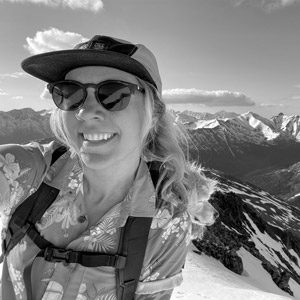
Emily Sullivan
Location: Anchorage, AK
Top Gear Picks: Hyper V8 165 / Women’s Hyper Manti 164
Website: http://ejsullivan.net
Instagram: @emelex
Emily Sullivan is a photographer and writer focused on outdoor recreation, environmental wellness, and relationships between humans and landscapes.
An obsessive backcountry skier, she lives for winter, logging big vert on light skis, and traversing wild landscapes. Her current objectives include ski mountaineering in the Alaska Range, Wrangell Mountains, and Arctic Refuge.
Emily is both an athlete and a community organizer for land issues in Alaska’s Arctic. She sits on the board of directors for the Alaska Avalanche School and serves as a Denali Rescue Volunteer. She lives, works, and skis on Dena’ina Ełnena, now known as Southcentral Alaska.
Share this Post



